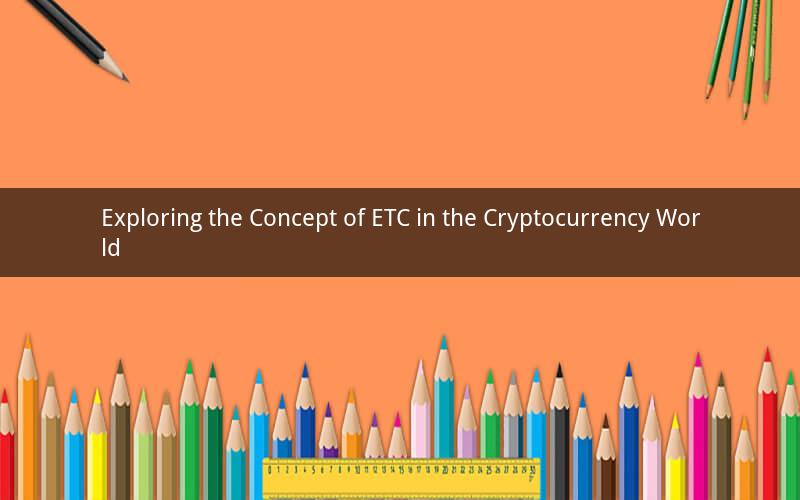
In the rapidly evolving world of cryptocurrencies, various terms and acronyms are frequently thrown around. One such term that often sparks curiosity is ETC, which stands for Ethereum Classic. But what exactly is ETC, and how does it fit into the broader landscape of digital currencies? Let's delve into the intricacies of ETC and its significance in the crypto community.
Understanding Ethereum Classic (ETC)
Ethereum Classic is a decentralized blockchain platform that enables developers to build and deploy smart contracts and decentralized applications (DApps). Launched in July 2015, ETC is a continuation of the Ethereum project, which began in 2014. The main difference between Ethereum (ETH) and Ethereum Classic is the way they handle certain events that occurred in the past.
The History of ETC
The story of Ethereum Classic began in 2016 when a significant security breach occurred on the Ethereum network. The incident, known as The DAO attack, exploited a vulnerability in the Ethereum smart contract system, leading to the theft of millions of dollars worth of Ether. The Ethereum community faced a crucial decision: to abandon the affected blockchain or to hard fork and create a new chain with the stolen funds returned.
The majority of the Ethereum community decided to hard fork, resulting in the creation of Ethereum (ETH), which discarded the affected blockchain and returned the stolen funds to the affected users. However, a significant portion of the community believed that the hard fork was against the principles of decentralization and immutability that underpin blockchain technology.
This group of enthusiasts decided to continue with the original Ethereum blockchain, which became known as Ethereum Classic (ETC). ETC retains the original blockchain, including the records of The DAO attack and the stolen funds, emphasizing the importance of adherence to the original protocol and the principle of "code is law."
The Technical Aspects of ETC
Ethereum Classic operates on a proof-of-work (PoW) consensus mechanism, similar to Bitcoin. Miners are responsible for validating transactions and adding new blocks to the blockchain. The PoW algorithm used by ETC is Ethash, which is designed to be memory-intensive and computationally demanding, making it less susceptible to mining centralization.
ETC follows a similar development roadmap to Ethereum, including regular network upgrades. However, the key difference is that ETC does not implement changes to the original blockchain protocol without a consensus from the majority of the community.
The Role of ETC in the Crypto Community
Ethereum Classic has gained a dedicated following in the crypto community, with several reasons for its appeal:
1. Adherence to the Original Protocol: ETC's commitment to maintaining the original Ethereum blockchain and the principle of "code is law" has resonated with many in the crypto community who value decentralization and immutability.
2. DApp Development: ETC serves as a platform for DApp development, with a growing number of projects being built on its blockchain. This contributes to the overall growth of the decentralized ecosystem.
3. Market Differentiation: ETC offers a distinct value proposition compared to Ethereum, providing an alternative for those who believe in the original Ethereum vision.
4. Community Support: ETC has a passionate and engaged community that actively contributes to its development and adoption. This includes developers, miners, and enthusiasts who are dedicated to the platform's success.
5. Investment Potential: Like other cryptocurrencies, ETC has the potential for investment growth. Its unique position within the crypto market has attracted attention from both retail and institutional investors.
Frequently Asked Questions (FAQs)
1. What is the main difference between Ethereum and Ethereum Classic?
The primary difference between ETH and ETC lies in their approach to handling The DAO attack. ETH hard forked to create a new chain, while ETC decided to continue with the original blockchain, including the records of the attack and stolen funds.
2. Is Ethereum Classic more secure than Ethereum?
Both Ethereum and Ethereum Classic are secure blockchains. The security of a blockchain depends on various factors, including the number of nodes, consensus mechanism, and the community's commitment to maintaining the network.
3. Can I transfer my ETH to ETC?
No, you cannot directly transfer ETH to ETC. Both cryptocurrencies operate on separate blockchains and have different addresses. However, you can sell ETH and use the proceeds to purchase ETC.
4. How does Ethereum Classic compare to other cryptocurrencies like Bitcoin and Litecoin?
Ethereum Classic, Bitcoin, and Litecoin are all PoW-based cryptocurrencies. While they share similarities, each offers unique features and value propositions. ETC's focus on DApp development and adherence to the original Ethereum protocol differentiate it from Bitcoin and Litecoin.
5. Can Ethereum Classic be mined?
Yes, Ethereum Classic can be mined using specialized hardware and software. Miners are responsible for validating transactions and adding new blocks to the ETC blockchain, earning rewards in the process.
In conclusion, Ethereum Classic (ETC) is a decentralized blockchain platform that emphasizes the importance of adherence to the original protocol and the principle of "code is law." With a growing community and a unique position within the crypto market, ETC has become an intriguing option for those interested in decentralized applications, investment, and the broader Ethereum ecosystem.